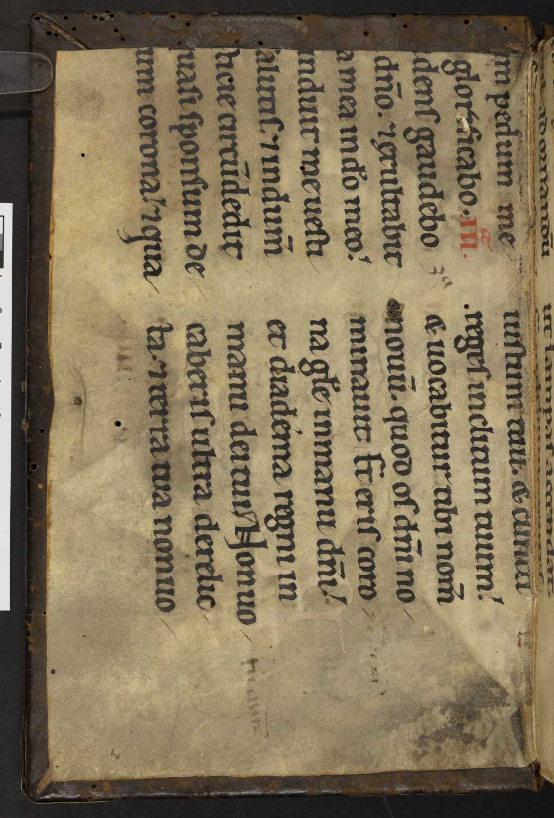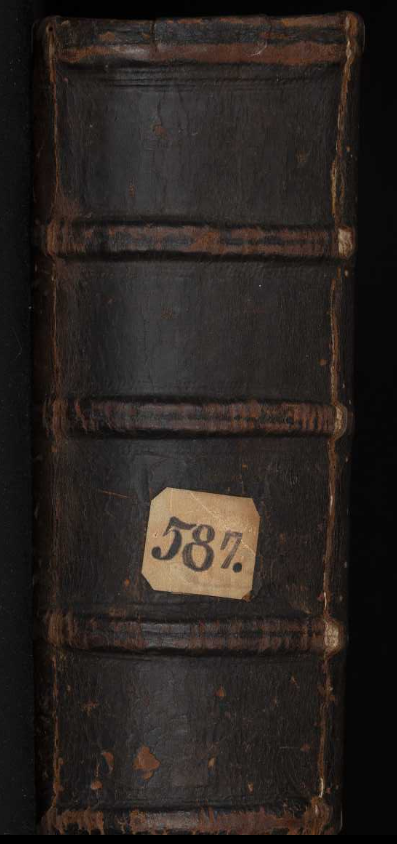Tomorrow is Buy Nothing Day, so let& #39;s celebrate medieval thrift with some recycled manuscript endleaves. #PolonskyGerman
Our #PolonskyGerman colleagues at the Herzog August Bibliothek are lucky enough to have a number of 15th-century manuscripts in their original bindings. They look exactly how you hope a 15th-century manuscript will look. https://hab.bodleian.ox.ac.uk/en/image-viewer/?manifest=https://iiif.hab.de/object/mss_587-helmst/manifest.json">https://hab.bodleian.ox.ac.uk/en/image-... https://hab.bodleian.ox.ac.uk/en/image-viewer/?manifest=https://iiif.hab.de/object/mss_653-helmst/manifest.json">https://hab.bodleian.ox.ac.uk/en/image-...
These manuscripts are bound in thick wooden boards covered with blind-tooled leather. The inside of each board is covered with a "pastedown"--a parchment sheet connecting the cover to the pages. (The bit that isn& #39;t pasted down is called an endleaf.) https://hab.bodleian.ox.ac.uk/en/image-viewer/?manifest=https://iiif.hab.de/object/mss_587-helmst/manifest.json">https://hab.bodleian.ox.ac.uk/en/image-...
Parchment was expensive, so medieval manuscript makers often made their pastedowns and endleaves out of pages recycled from older, larger manuscripts. These endleaves were taken from a manuscript of sermons--possibly just one sheet, cut in half and folded. https://hab.bodleian.ox.ac.uk/en/image-viewer/?manifest=https://iiif.hab.de/object/mss_587-helmst/manifest.json">https://hab.bodleian.ox.ac.uk/en/image-...
These endleaves came from a music manuscript. You can see the crease in the middle where the spine of the original manuscript would have been. Cod. Guelf. 653 Helmst.: https://hab.bodleian.ox.ac.uk/en/image-viewer/?manifest=https://iiif.hab.de/object/mss_653-helmst/manifest.json">https://hab.bodleian.ox.ac.uk/en/image-... #PolonskyGerman
This endleaf gets bonus points because before it was a music manuscript, it was a defective sheet of parchment that needed to be stitched up during preparation. #PolonskyGerman https://hab.bodleian.ox.ac.uk/en/image-viewer/?manifest=https://iiif.hab.de/object/mss_653-helmst/manifest.json">https://hab.bodleian.ox.ac.uk/en/image-...
Cod. Guelf. 15 Helmst. has a particularly lovely pigskin binding and pastedowns patchworked together from a smaller 14th-century manuscript. https://hab.bodleian.ox.ac.uk/en/image-viewer/?manifest=https://iiif.hab.de/object/mss_15-helmst/manifest.json">https://hab.bodleian.ox.ac.uk/en/image-... #PolonskyGerman
For Cod. Guelf. 268 Helmst., only stubs of an older music manuscript were used. This allows you to see the finishing of the goatskin cover and the grain of the wooden board underneath. https://hab.bodleian.ox.ac.uk/en/image-viewer/?manifest=https://iiif.hab.de/object/mss_268-helmst/manifest.json">https://hab.bodleian.ox.ac.uk/en/image-... #PolonskyGerman
Recycled fragments like these are known as manuscript waste. There& #39;s an article about them here: https://www.atlasobscura.com/articles/book-waste-printed-garbage
and">https://www.atlasobscura.com/articles/... a whole website devoted to digitizing and cataloguing manuscript fragments here: https://fragmentarium.ms/ ">https://fragmentarium.ms/">...
and">https://www.atlasobscura.com/articles/... a whole website devoted to digitizing and cataloguing manuscript fragments here: https://fragmentarium.ms/ ">https://fragmentarium.ms/">...

 Read on Twitter
Read on Twitter




















